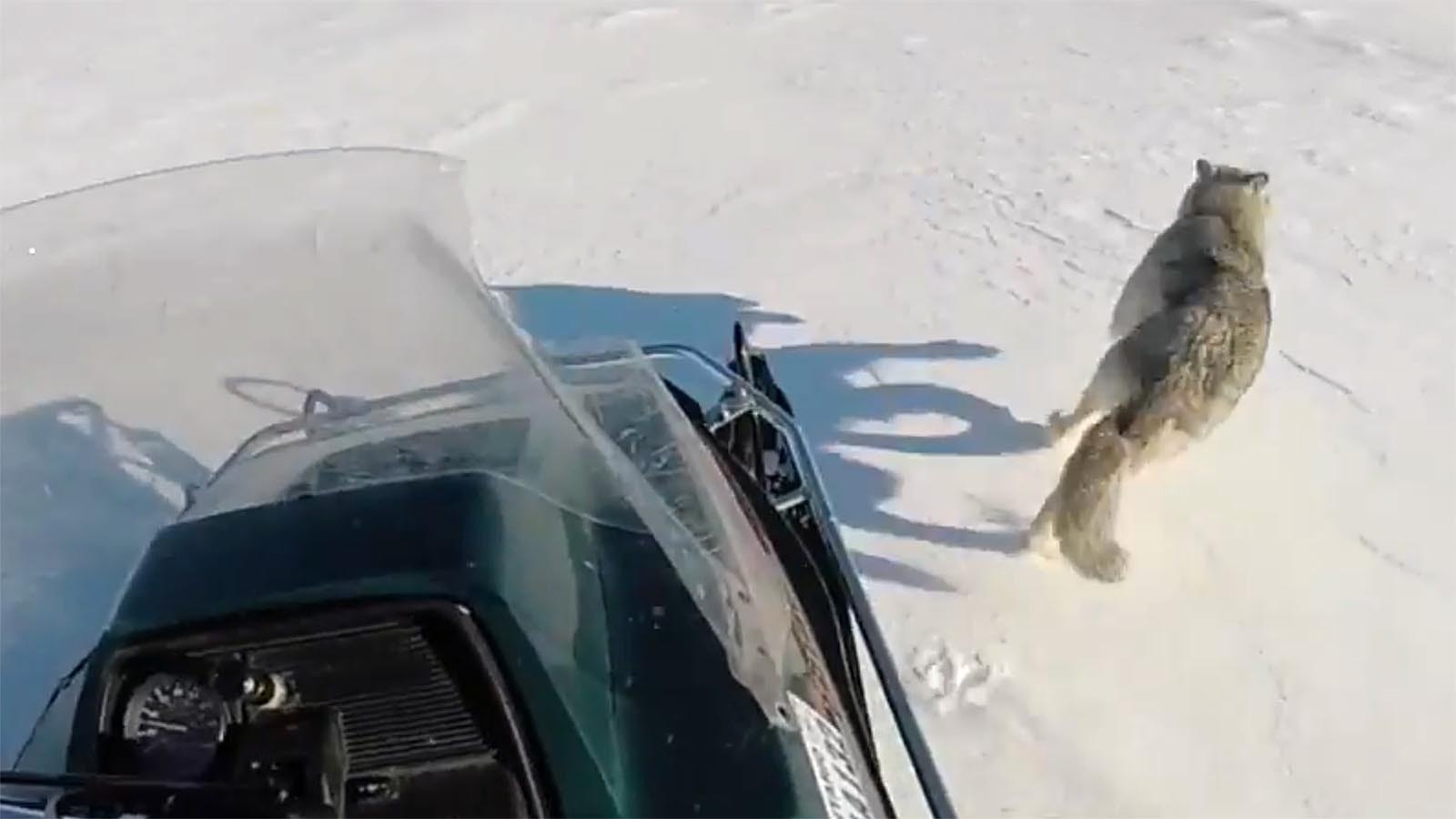The classification of jackrabbits in Wyoming as “predatory animals” — the same classification as coyotes and wolves in most of the state — might cause some to do a double-take.
Don’t worry, that doesn’t mean there are vicious carnivorous hares lurking in the sagebrush and devastating livestock herds.
Instead, “predatory” is essentially a catch-all classification for animals that might become a threat or nuisance, particularly to agriculture.
Jackrabbits are classified as predatory animals because of their ability to devour crops, particularly when their numbers swell. They share that “predatory” nuisance potential with porcupine, raccoon, skunks and even stray cats.
It’s all part of a complex system of how the state classifies animals based on location, species, effects on agricultural and livestock, hunting priorities and the animals’ nature.
Although it’s been a while since Wyoming has seen huge mobs of jackrabbits, they were once a major concern.
Casper-area rancher Dennis Sun told Cowboy State Daily that about 40 years ago, it wasn’t uncommon to see a small army of pesky hares.
“You’d drive into a set of corrals and outbuildings, and there would be 300-400 jackrabbits there,” he said.
‘Predator’ And ‘Predatory’ Not Always The Same Thing
“Predatory” in the official sense doesn’t always carry the same meaning as “predator” in the biological sense. As in, an animal that hunts and kills other animals for food.
Moreover, while not all predatory species are actual predators, not all predators are classified as predatory species.
Some actual predators, such as coyotes and gray wolves except where they’re considered trophy game animals, are classified as predatory animals.
But other predators, such as mountain lions, are not. Mountain lions are classified by the Wyoming Game and Fish Department as a trophy game species.
So, “predator” and “predatory animal” might, or might not, mean the same thing – depending upon which critter is being referenced.
Hunting Predatory Animals, All Bets Are Off
When it comes to wolves in Wyoming, things can get even more convoluted.
In parts of northwest Wyoming, wolves, like mountain lions, are predators which are classified as a trophy game species.
But in the rest of the state, wolves have the same status as coyotes – predators that are classified as a predatory species.
That distinction has implications as to if and when animals can be hunted.
Trophy game animals may only be hunted with a tag and during set hunting seasons.
So northwest Wyoming, mostly on land adjacent to Yellowstone National Park, hunters need to have wolf tags and can shoot wolves only during wolf hunting season.
In the rest of Wyoming, roughly 85% of the state, all bets are off; wolves may be killed on sight at any time.
And that includes by means that some find cruel and think should be banned, such as running them down with snowmobiles.
Wolves in those parts of Wyoming share the same status as jackrabbits and coyotes, they may be killed on sight — no license required, no bag limits.
The idea being that when it comes to protecting livestock and crops, farmers, ranchers and predator hunters can take the gloves off.
Different Species, Different Regulations
To add another layer of complexity, jackrabbits and cottontail rabbits are also classified differently.
Cottontails are classified in Wyoming as a small game animal. They may be hunted, but only with a license and during hunting season.
Jackrabbits and cottontails are also decidedly different species.
Jackrabbits are hares, not true rabbits, as cottontails are.
One big difference between the two is that rabbits are born much like puppies or kittens: blind, helpless and often without fur.
Hares, on the other hand, are born with their fur on, eyes open and able to run and hop around on their own almost immediately.
The term “jackrabbit” was derived from early pioneers referring to them more crudely, as “jackass rabbits.”
The pioneers used that term because of the hares’ gigantic ears, which resemble those of donkeys, or jackasses.
Rabbits, Hares Both Gobble Crops
Rabbits and hares alike can be a problem for farmers, Brett Moline, Wyoming Farm Bureau public affairs director, told Cowboy State Daily.
“Like with grasshoppers, it’s not really so much what they eat, but how and when they eat it,” he said.
Cottontails and jackrabbits like going into fields early, and nipping crops while the plants are still in the bud, Moline said, ruining farmers’ growing seasons right off the bat.
They can also “be Hell on gardens,” he added.
The Bad Old Days
Rabbit and hare populations surge and decline in cycles. The surges these days aren’t nearly as bad as they used to be, Moline said.
Jackrabbits attacking crops “is a localized problem” these days, he said.
Meaning, a particular farmer might have the misfortune of being overrun with hungry hares. But once they’re killed off in that area, the problem doesn’t spread to others.
In years past, people faced “jackrabbit plagues,” with jackrabbits descending upon fields in the hundreds, or even thousands.
“Just within my lifetime, I can remember there being a bounty on jackrabbits,” Moline said.
However, it’s been decades since Wyoming has seen jackrabbits on that scale – and with luck, it won’t happen again, he said.
Kansas Farmers Resorted To Mass Hare Clubbing
Wyomingites can be thankful massive numbers of jackrabbits are no longer common. Back when they were, it could get gruesome.
Things got terribly bad with jackrabbits in Kansas during the Great Depression and “dust bowl days” of the 1930s, according to the Kansas Historical Society.
So much so, that farmers would organize jackrabbit drives, pushing thousands of hares into enclosures where they’d be beaten to death with clubs.
“A fenced area in the center was the object of the drive. The size of the enclosure varied from about 75 feet square to as large as 40 acres. People closed in toward it, coming closer together all the time,” according to an account from the Kansas Historical Society.
“By the time they reached the enclosure, people were shoulder to shoulder, blocking all possible paths of escape for the rabbits,” according to the account. “At the end of most drives, the rabbits were clubbed to death in the fenced enclosure. Firearms were strictly forbidden, lest participants injure each other.”
Mark Heinz can be reached at mark@cowboystatedaily.com.





